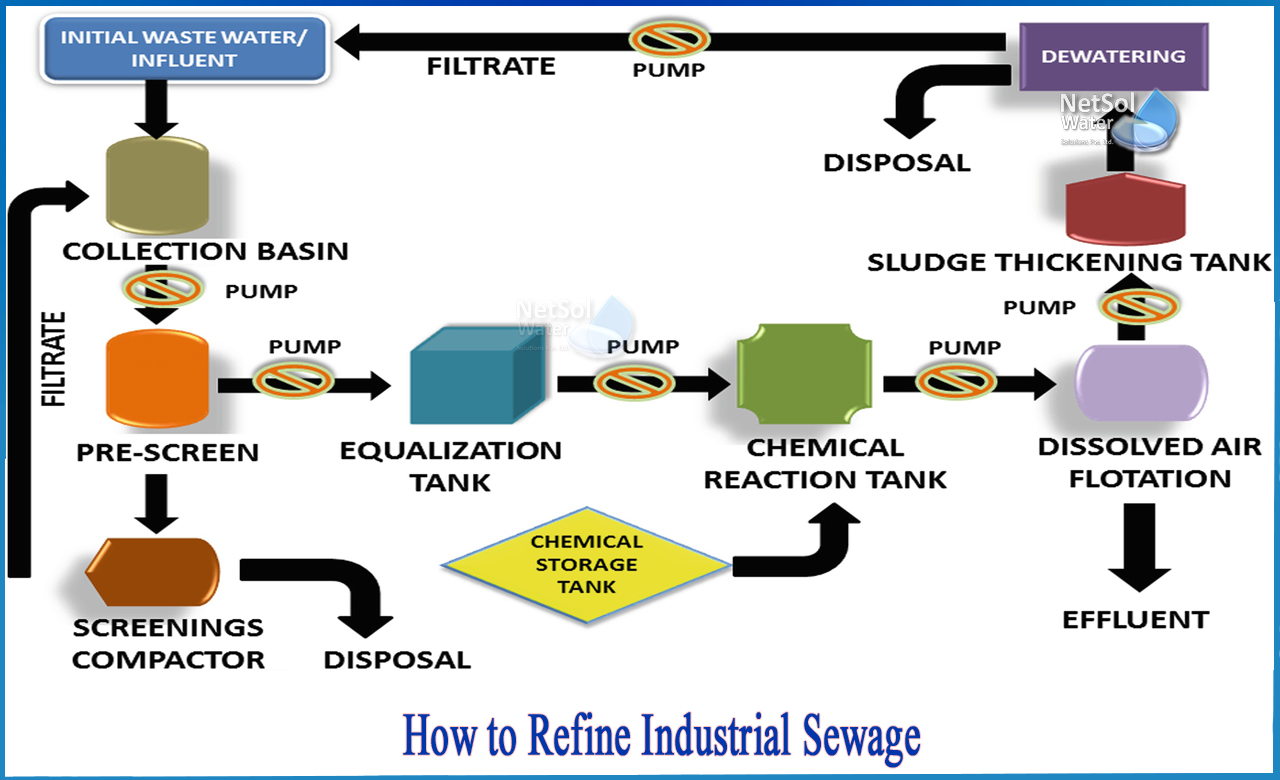Industrial Waste Water Treatment-- Eco-Friendly Solutions for Water Recycling
Wiki Article
Trick Strategies in Industrial Waste Water Treatment Processes
The therapy of industrial wastewater is a vital aspect of environmental monitoring, entailing a variety of methods made to minimize the impact of pollutants. From the essential physical methods that divide solids to the advanced chemical and biological procedures that target details contaminants, each strategy plays a crucial function in accomplishing water high quality requirements. Innovations in modern technologies such as membrane filtration and advanced oxidation procedures offer innovative remedies for improving treatment efficacy. Comprehending exactly how these methods interconnect and their effects for sustainability raises vital inquiries concerning the future of wastewater monitoring in industry.Physical Therapy Approaches
How efficiently can physical treatment methods resolve the complexities of industrial wastewater? Physical treatment techniques play a critical function in the initial phases of wastewater management, concentrating largely on the removal of solids and huge particulates. Methods such as sedimentation, filtration, and flotation protection are crucial for lowering the concentration of suspended solids, thereby enhancing the performance of subsequent therapy processes.Sedimentation includes the gravitational settling of solids, enabling for the splitting up of heavier materials from the wastewater. This method is especially efficient in clarifying water prior to chemical or biological therapies.
In addition, flotation techniques, which use air bubbles to lift suspended solids to the surface area for elimination, are reliable in treating wastewater with high focus of fats, oils, and greases. In general, physical treatment approaches work as an essential initial action in the thorough administration of industrial wastewater, making sure that the lots on subsequent treatment phases is reduced and improving total treatment effectiveness.
Chemical Treatment Strategies
While physical treatment techniques prepared for effective wastewater monitoring, chemical treatment strategies are crucial for attending to the more intricate contaminants usually discovered in commercial effluents. These techniques make use of different chemical representatives to precipitate, counteract, or oxidize hazardous materials, guaranteeing a more comprehensive elimination of pollutants.
One typical strategy is coagulation and flocculation, where chemical coagulants such as aluminum sulfate or ferric chloride are included to advertise the aggregation of suspended fragments. This process improves solid-liquid splitting up, reducing turbidity and enhancing water top quality. Additionally, neutralization processes are used to readjust the pH of wastewater, using acids or bases to counteract acidic or alkaline streams, respectively.
Oxidation-reduction reactions play a vital duty in degrading organic pollutants and virus. Chemical oxidants like chlorine, ozone, or hydrogen peroxide are used to break down complex natural compounds, making them less damaging or extra eco-friendly. Progressed oxidation procedures (AOPs) incorporate numerous oxidation strategies to boost toxin elimination performance.
Organic Treatment Procedures
The performance of wastewater therapy is substantially boosted by organic therapy procedures, which harness the natural metabolic activities of microorganisms to break down organic matter and remove pollutants. Industrial Waste Water Treatment. These procedures largely entail cardio and anaerobic digestion, each tailored for specific kinds of wastewaterCardio therapy processes utilize oxygen to support microbial development, advertising the break down of organic pollutants right into carbon dioxide and water. Common methods consist of triggered sludge systems, where aeration tanks promote the blending of wastewater with microorganisms, and trickling filters, which urge biofilm advancement on media surfaces.
Conversely, anaerobic therapy processes occur in the lack of oxygen, utilizing anaerobic germs to disintegrate raw material, leading to biogas manufacturing, you could try these out a renewable resource resource. Anaerobic digesters are typically utilized in industrial settings for this function, effectively lowering the volume of sludge while creating important biogas.
The selection of a biological therapy technique relies on wastewater attributes, therapy goals, and governing requirements. The assimilation of biological procedures in wastewater treatment not only boosts toxin elimination efficiency however likewise advertises sustainability by minimizing chemical usage and sustaining resource recuperation.
Advanced Oxidation Processes

Typical AOP strategies consist of Fenton's photocatalysis, ozonation, and reagent. Fenton's reagent, a combination of hydrogen peroxide and ferrous iron, militarizes the development of hydroxyl radicals, making it effective for treating wastewater consisting of phenolic substances and other recalcitrant compounds.
AOPs use a number of advantages, consisting of lowered sludge manufacturing and the ability to treat wastewater with high focus of natural toxins. However, the application of AOPs needs mindful factor to consider of operational parameters and cost-effectiveness, making sure that these innovative strategies are suitably integrated into existing wastewater treatment systems.
Membrane Layer Filtration Technologies

Microfiltration is effective for removing suspended bacteria and solids, while ultrafiltration targets smaller sized organic molecules and viruses. Nanofiltration links the void in between ultrafiltration and reverse osmosis, efficiently getting rid of divalent ions and organic compounds. Reverse osmosis offers the greatest degree of filtration, utilized mostly for desalination and getting rid of mono-valent ions.
Membrane layer technologies offer many advantages, including reduced energy intake compared to typical treatment techniques, modular style for scalability, and the capacity for water healing and reuse. Obstacles such as membrane layer fouling and the demand for normal upkeep need to be resolved to make sure system efficacy. Generally, membrane layer filtration innovations stand for a crucial element of modern industrial wastewater treatment strategies, advertising sustainability and source conservation in water administration.
Final Thought
In final thought, industrial wastewater therapy utilizes a diverse range of techniques, including physical, chemical, biological, and progressed approaches. Proceeded improvements in these techniques will better improve the performance and effectiveness of wastewater treatment procedures in commercial settings.The treatment of industrial wastewater is a critical element of ecological monitoring, involving a variety of techniques created check this to mitigate the impact of contaminants.Just how successfully can physical therapy methods deal with the complexities of industrial wastewater?Advanced oxidation processes (AOPs) represent an innovative strategy in industrial wastewater treatment, designed to efficiently break down natural toxins that are usually resistant to conventional treatment methods (Industrial Waste Water Treatment).In conclusion, industrial wastewater treatment employs a diverse array of techniques, including physical, chemical, biological, and progressed approaches. Proceeded innovations in these methodologies will certainly better boost the performance and performance of wastewater therapy processes in industrial settings
Report this wiki page